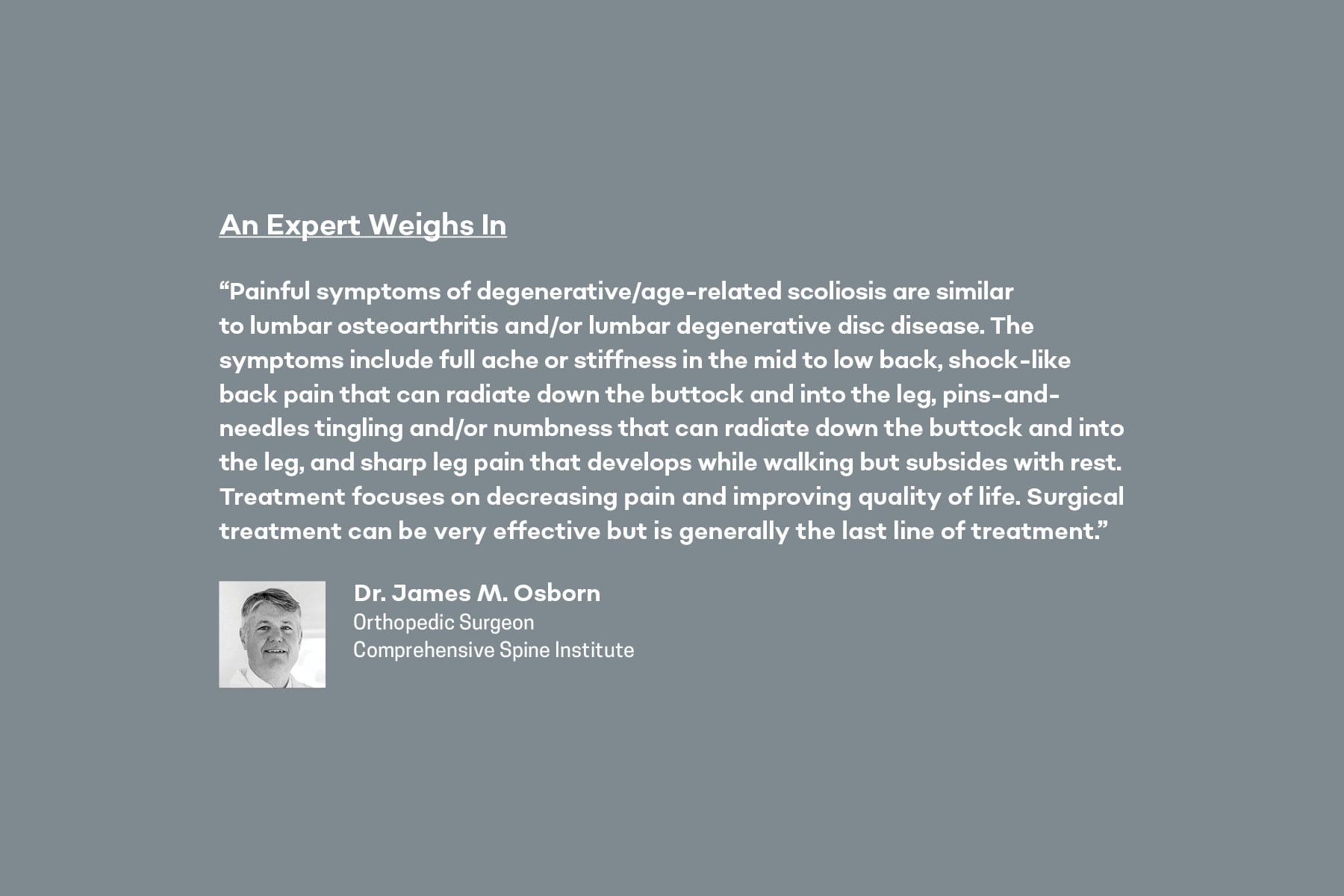Annual Bone & Joint Section
Wear and tear on your spine over time can lead to pain, inflammation, and adult-onset degenerative scoliosis. Fortunately, relief is possible.
By Lucy Morris
What Is Scoliosis?
Scoliosis is a sideways curvature of the spine that can range in severity. Most cases are mild and don’t require treatment, but others can be severe and cause mobility issues and pain. In extreme cases, a significant spinal curve can even affect space in the chest, making it difficult for the lungs to function properly.
Common signs and symptoms of scoliosis include uneven shoulders, one shoulder blade appearing more prominent than the other, an uneven waist, and/or one hip higher than the other.
Scoliosis and Aging
Scoliosis can develop during adolescence, in which case it’s known as idiopathic scoliosis. Idiopathic scoliosis tends to run in families, and it rarely causes pain. Adult-onset scoliosis, on the other hand, is often caused by degeneration of the small joints in the spine. This form of scoliosis typically affects both the spine and neck and can cause pain, inflammation, numbness in the lower extremities, and stiffness.
Back pain caused by degenerative scoliosis often begins gradually and worsens over time. Pain may be worse in the morning, improve once a person is active, and then worsen again at the end of the day. Sitting usually provides more relief than standing or walking. The spinal curvature resulting from degenerative scoliosis progresses approximately one to two degrees per year.
Treating Scoliosis
The goal of scoliosis treatment is to decrease pain, improve function, and stop curvature progression when possible.
The first line of defense is always activity modification and exercise; activities that aggravate symptoms should be avoided, and exercises can be recommended to loosen muscles and correct imbalances that cause the spine to curve.
Oral steroids or steroid injections may also be recommended to help reduce inflammation and treat pain.
In severe cases, surgery may be warranted. There are several different spinal deformity procedures that have been developed to correct scoliosis-related issues. A spine surgeon can help you determine what’s most appropriate for your case if nonsurgical techniques have not provided relief. HS


